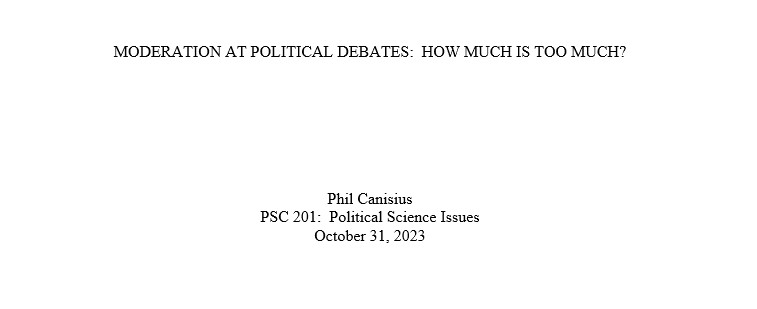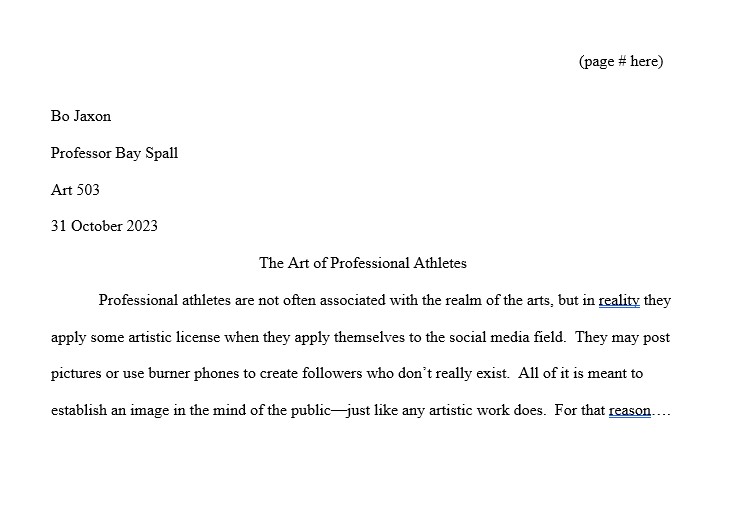A research paper is an in-depth piece of writing about any subject. At almost every level of school, you will be asked to complete a research paper that shows that you understand not just how to write but also how to find information from various sources.
What makes a research paper different from other types of essays? The main difference is that a research paper does require you to investigate what other people have written about the subject.
You might still come up with an argument or thesis statement in a research paper, but the content must be based on an abundance of primary and/or secondary sources.
Want to learn more about how to write a research paper? You have come to the right place!
What is a Research Paper?
A research paper is a type of expository essay, which is written in the third person and explains a topic thoroughly for the reader.
A research paper is not defined by what you are writing about but how.
You are not trying to persuade your reader to take action, as you would in a persuasive essay.
Likewise, you are not trying to describe an event, as in a descriptive essay.
Nor are you telling a story as with a narrative essay.
Even if you structure your essay like a cause and effect or a compare and contrast paper, the research itself is what defines a research paper.
Tips For Writing Your Research Paper
- Writing a research paper seems daunting a first, but once you get the hang of it, you will be able to write them a lot easier.
- Give yourself a lot of time. If you struggle with time management, learn how to better manage your time by avoiding distractions, and setting aside some time each day to work. Use the Pomodoro Technique to see if that helps you to remain focused on your research paper.
- Make sure you get clarification on what the instructor expects. In particular, ask about:
- Length of the research paper
- How many words?
- How many pages?
- Subject restrictions
- Is there anything you cannot write about?
- Are there specific topics you can choose from?
- Are there any suggestions for topics?
- Format or citation style
View 120,000+ High Quality Essay Examples
Learn-by-example to improve your academic writing
How to Write Your Research Paper
Take a deep breath. It helps to break down the process of writing the research paper into several steps rather than leaping right into it.
Each step can be followed in order.
1. Pick a Topic
If you have trouble choosing a topic, ask your instructor for help, or refer to the helpful list below.
Do the research and take notes
- a. Use online and academic databases
- b. Use libraries
- c. Conduct interviews
- d. TAKE NOTES
The importance of taking notes during the research process cannot be underestimated. After all, the research defines the research paper. The better your notes, the better your paper.
2. Organize Your Notes
Organizing your notes according to author or theme will help you prevent accidental plagiarism.
Also, when you organize your notes, you will see themes emerge in your research. Discovering the themes will help you outline your research paper, and create more flow when you write.
When you identify themes in the research, you will also have an easier time coming up with your thesis statement.
3. Write an Outline
When you have all your themes ready, it is time for you to envision the structure of your research paper.
Choose three of the most common or important themes from your research.
Then, create an outline according to the standard academic outline format:
I. Introduction
a. Body Topic 1
b. Body Topic 2
c. Body Topic 3
II. Conclusion
4. Write a Rough Draft
A rough draft accomplishes two goals. First, it transforms your outline into an essay.
Second, it gives you the opportunity to clean up any messes you made later so when you turn in your paper, it is in even better condition.
5. Rewrite into the Final Draft
Polishing your rough draft involves making sure your arguments are logical and your ideas are organized. If you worked from an outline, chances are your paper is already logical and all you need is to clean up the prose.
Ask a friend or a writing tutor for help, because sometimes it helps to get a fresh pair of eyes on your paper.
6. Format Your Paper
Put your finished draft into the appropriate format (such as APA, MLA, or Chicago).
7. Proofreading and Editing
Once your final draft is complete, it is important to proofread and edit your work. This step helps with getting your paper to a point where it is free of grammatical errors, spelling mistakes, and formatting issues. Plus, proofreading helps to improve the clarity and coherence of your arguments. You can usually get help from a peer, a tutor, or your professor, if you’re unsure of how to review your paper for any mistakes you might have missed.
8. Adding Visuals and Appendices
Visuals such as charts, graphs, and images can help with the understanding of your research. Be sure that all visuals are properly labeled and referenced in the text. If your research includes extensive data or supplementary material, you should add an appendix section at the end of your paper.
9. Writing an Abstract
An abstract is a brief summary of your research paper, usually 150-250 words. It should cover the main objectives, methodology, results, and conclusions of your research. An abstract lets readers quickly grasp the purpose and results of your paper.
How to Do Research
The research itself is the most important but also the trickiest part of the research paper. It is something that many students struggle with them they first start writing.
If you are new to the process of doing research, the best thing you can do is to ask a librarian for help. In some cases, your library will have a class that can show you the best way to search for information in academic databases.
Use keywords. If your topic is Persian history, then your keywords are easy: “Persian History.” If you want to narrow down the search, then you will simply type in additional keywords.
How to Take Good Notes
Taking notes during the research process is critical. You cannot write your paper without referring to the research—otherwise it would not be a research paper.
Therefore, learn how to take good notes.
There are two ways you can take notes: by source, or by theme.
Taking Notes By Source
This method of taking notes is best used if your sources go really into depth about the subject.
It is also a good method to use when you know very little about the subject matter, and are basically starting the from scratch.
To take notes by each source, go through one source at a time and do the following two things:
- Write down the full bibliographic data of the source. If you can, write it down now in the proper citation format you were asked to use (MLA, APA, etc.). Take note of:
- Author(s) name
- Date
- Title of article
- Title of journal or book
- Page numbers
- Quote or paraphrase as you read, making sure to write down the page number.
Repeat for each source you find. That’s it. It may take a while when you have a lot of sources, but the process is relatively simple.
Taking Notes By Theme
Taking notes by theme is a process best used when you already have some basic ideas about what you will find, or even already have an outline prepared.
Also, this method can be helpful when you have several sources that treat the subject relatively superficially, allowing you to quickly skim them for the essential and most important data such as statistics or the results of original experimental research.
To take notes by theme, do the following:
- Write down the full bibliographic data of the source. If you can, write it down now in the proper citation format you were asked to use (MLA, APA, etc.). Take note of:
- Author(s) name
- Date
- Title of article
- Title of journal or book
- Page numbers
- Cull facts and information from each source, entering it into each thematic category in your outline.
Most people prefer to do their research on their computer, but if you want to use pen and paper that is fine too.
Where to Get Source Information
Your librarian can help you locate information according to your chosen subject.
Online
You can start easily with online searches. Online searches start with Google, Google Scholar, and other popular search engines you can access easily with your browser.
The benefits of an online search include:
- Familiarizing yourself with the subject
- Being able to come up with some research questions and a hypothesis based on your preliminary research
- There are some credible sources online.
However useful it can be, online research has its drawbacks. The drawbacks of online research include:
- Too much information
- Too few credible sources
- Some professors will not allow online sources
Academic Databases
Academic databases are only available through university libraries or to members.
Some of the most common databases include EBSCO, JSTOR, ProQuest, Questia, and PubMed.
The benefits of using academic databases include;
- Access to credible peer-reviewed sources
- Ability to perform advanced searches
- Narrow to a specific time period
- Narrow to a specific journal
- Access to primary sources
The drawbacks of using academic databases include:
- They are only available through subscribers like universities and other educational institutions
- They require advanced research skills and training
- They are not good for learning the basics of a subject.

Are Your Sources Credible?
By now, you will have heard that there is a big difference between credible and non-credible, or unreliable, sources.
You may have also heard that you should use peer-reviewed sources.
Telling the difference between a good and bad source can be challenging, especially with all the bogus academic journals out there.
Just because something has the word “Journal” in the title does not make it a credible or peer-reviewed source.
Peer-Reviewed Sources
The term “peer-reviewed” means that the article has been read and critiqued by other academics, professionals, or “experts” in the same field.
If you have doubts as to the veracity of the source, simply check the name of the journal to make sure it is a genuine peer-reviewed journal as opposed to a fake peer-reviewed journal.
Why is Peer-Reviewed Important?
When writing a research paper, it is not enough just to say that you read something on the Internet.
On the Internet, anyone can say anything they want; but what they say is not necessarily true.
The goal of a research paper is to find the truth about a subject and then writing about what you have learned.
How do you know the truth?
The question “What is Truth?” is a good topic for a research paper on philosophy!
Practically speaking, though, you cannot rely on bloggers or even newspapers to count as “expert” sources.
When you are writing a research paper, you need to discover what academics, scholars, or recognized leaders in the field have come up with. The whole point of the research paper is doing the research, and doing the research means reading scholarly, peer-reviewed articles or books.
The reason why scholars and academics are considered “experts” is that they dedicate their lives to studying a specific issue, person, or time period. They are not just any blogger with an opinion.
When you write your research paper, you can add your own conclusions or opinions, but what really counts is how to can synthesize credible information.
If your instructor said it was alright to use Internet sources, then great! But if you have been asked to use academic, peer-reviewed sources only, you have to find those sources in an academic database or Google Scholar.
Research Paper Format
As with other types of academic essay, a research paper will have a certain structure or format.
Some research papers are written in a particular style such as MLA, APA, or Chicago. Always ask your instructor what they prefer or expect.
Basic Format
I. Introduction
II. Body
III. Conclusion
Expanded Format
I. Introduction
a. Lead-in passage
b. Thesis statement
II. Body Section
a. Topic sentence
b. Supporting evidence
i. Quotes or paraphrase
c. Explanation of supporting evidence
III. Body Section
a. Topic sentence
b. Supporting evidence
i. Quotes or paraphrase
c. Explanation of supporting evidence
IV. Body Section
a. Topic sentence
b. Supporting evidence
i. Quotes or paraphrase
c. Explanation of supporting evidence
V. Conclusion
a. The research shows that…(here you can repeat the thesis statement)
Research Paper Outline Example
I. Introduction
A. The first electric car was actually invented in the early 1800s by a Scottish man named Robert Anderson (“Timeline: History of the Electric Car,” 2009).
B. During the twentieth century, the oil and gas industry hindered the emergence of new electric car technologies.
C. The future of electric cars remains to be seen, although it is a significant way of reducing dependence on fossil fuels.
Thesis: Electric cars are an important way to reduce dependence on fossil fuels, thereby reducing greenhouse gas emissions and improving national security.
II. The history of electric cars.
A. Inventors in the United Kingdom, Hungary, the Netherlands, and the United States all devised different versions of an electric car (United States Department of Energy, 2021).
B. Ford’s Model T “dealt a blow to the electric car,” (United States Department of Energy, 2021, p. 1).
III. The rise and fall of oil and gas
A. After it was clear that the internal combustion engine could be mass-produced, it was also clear that the extraction of fossil fuels would be worth the effort.
B. Gas-dependent vehicles dominated the motor vehicle landscape throughout the 20th century.
C. Starting with the oil embargo of the 1970s, it became clear that dependence on fossil fuels was creating global political and economic instability.
D. The environmental problems that result from the use of fossil fuels have driven interest in electric car research and development.
IV. The present and future scenario.
A. One of the first new-generation electric cars was General Motor’s EV1 (United States Department of Energy, 2021).
B. The Toyota Prius was the first commercially viable and commercially successful hybrid (gas and electric) car on the market (United States Department of Energy, 2021).
C. Tesla makes the first luxury all-electric car, kick-starting a revolution in electric car consumer demand and electric car technology.
V. Conclusion
Research shows that while the twentieth century was the century of dependence on fossil fuels, the twenty-first century is the era of the electric car. Electric cars will greatly improve national security and promote energy independence. Moreover, electric cars will reduce dependence on fossil fuels, which will reduce greenhouse gas emissions. While not a panacea, electric cars are one of the most important features of a global strategy to improve the environment and promote world peace.
References
“Timeline: History of the Electric Car,” (2009). PBS. http://www.pbs.org/now/shows/223/electric-car-timeline.html
United States Department of Energy (2021). The history of the electric car. https://www.energy.gov/articles/history-electric-car
Research Paper Cover Page
APA Style Research Paper Cover Page
Here is a sample of what an APA research paper cover page will look like:

Explanation
- Note: for APA 7 student papers, a header with a title in all caps (abbreviated if long) is not needed—for a professional paper it is.
- The full title of the paper, centered and bolded.
- The author’s name, centered.
- The institutional affiliation, centered.
- The course name and number, centered.
- The instructor’s name, centered.
- The due date, centered.
- Everything double-spaced
MLA Style Research Cover Page
Here is what your MLA cover page will look like (notice that it is not a separate page)

Explanation
- The author’s name, instructor’s name, course name and number, and the due date, aligned to the left.
- The title of the paper, centered, after the date.
- Note, everything is double-spaced and there is no additional gap between the information in the top left corner, the title, or the start of the paper.
Chicago Style Research Cover Page
Here is what a Chicago style cover page may look like:

Explanation
- Note: the title is all caps at the top with a gap between it and author info
- The author’s name, centered.
- The course name and number, centered.
- The due date, centered.
- No double-space
Research Paper Topics
History
- What Sparked the Enlightenment in Europe?
- Research the history of Vietnam
- The history of the African slave trade prior to the trans-Atlantic slave trade.
- The history of global piracy, from Phoenicia to Singapore.
- Factors shaping the Age of Exploration.
English/Literature
- What do scholars have to say about James Joyce’s Ulyssses?
- Research the biography of Virginia Woolf and describe how her life influenced her writing.
- What is the influence of American modern literature on the literature of the world, focusing on one region?
Nursing
- Research one nursing theory of your choice.
- What are the differences between micro, mezzo, and macro-level theories?
- Research the etiology, symptoms, and treatment options for diabetes.
- Trace the history of nursing informatics.
Psychology
- Research the history of behaviorism and trace its impact on the field of psychology.
- Contextualize the writings of Sigmund Freud. To what degree was he influenced by historical, cultural, political, and social trends?
- Explain the causes and symptoms of schizophrenia in a research paper.
- Research the controversy over treating childhood psychiatric disorders with medications.
- Choose a developmental theory and research its origin and potential application to therapy.
Art and Music
- Explain the rise of German expressionism, in film, art, or both.
- Describe the underground music scene in Tokyo as it emerged in the 1960s, showing how it has evolved since to influence the world.
- Write a research paper on the religious art of either Italy or the Netherlands.
- What role did the visual arts play in the cultures of West Africa?
Current Event Topics
- The Impact of COVID-19 on Education Systems
- Can Regulation Fix the Cryptocurrency Market?
- Climate Change Deep Dive: What’s Really Going On
- Free Speech on Social Media and Modern Political Campaigns
- Mental Health and Mass Shootings: What is the Relationship?
Technology and Innovation
- The Evolution of Artificial Intelligence: Opportunities and Ethical Dilemmas
- Can Electric Vehicles Really Replace ICE Vehicles?
- The Impact of 5G Technology on Communities, Communication and IoT
- The Challenges of Cybersecurity in the 21st Century
- What is the Trilemma—and Does Kaspa Solve the It?
Health and Medicine
- Telemedicine: A Virtual Shift in Healthcare Post-COVID-19
- How Diet and Exercise Impact Diabetes
- Traditional Chinese Medicine on the Rise
- Regulatory Capture: Ethical Challenges in the CDC and FDA
- How to Obtain Personalized Medicine Today
Social Sciences and Education
- The Impact of Remote Learning on Student Performance
- What are Social Media’s Effects on Mental Health and Society?
- Can Education Really Solve the Problem of Social Inequality?
- The Influence of Culture on Leadership Styles
- The Intersection of History, Media and Psychology in Advertising
Environmental Science and Sustainability
- What are 15 Minute Cities?
- Future Prospects in Renewable Energy
- The Effects of Pollution on Biodiversity and Ecosystems
- Sustainable Agriculture: Best Practices
- The WEF and Yuval Harari: Visions for the Future
Business and Economics
- Uber and Amazon Flex: Pros and Cons of the Gig Economy
- Case Studies in Corporate Social Responsibility: Successes and Failures
- The Future of Work in View of Automation and AI Machine Learning
- Behavioral Economics: How Emotions Influence Financial Decisions
- The History of Women in Business Leadership
Arts and Culture
- Banksy and the Evolution of Street Art and its Socio-Political Impact
- The Representation of Minorities in Film and Television
- The Influence of Satire on Social Norms
- The History and Development of Animation from Disney to Pixar
- Middle Eastern Museums and the Preservation of Culture
Politics and International Relations
- The Impact of Migration on National Sovereignty and Security
- The Role of the United Nations in Maintaining Peace in the Middle East
- From Ukraine to Palestine: Protests and War Support
- An Axis of Resistance? China, Iran, and Russia and the Possibility of a New Order
- The Future of the European Union in Jeopardy
Research Paper Citation Styles
Citation styles are important for maintaining consistency in your work and for turning you into a proper scholar.
When you have been asked to use a specific citation style, you should follow that style throughout the body of your research paper and also in the bibliography or works cited section.
The main citation styles used in research papers include American Psychological Association (APA), Modern Language Association (MLA), and Chicago style. However, Turabian, Harvard style, and American Sociological Association (ASA) are also commonly used.
Research Paper Example
Outline
I. Introduction
A. Catherine “Katy” Ferguson was born sometime in 1779
B. Although born into slavery and suffering, had a vision of empowerment.
C. Liberated herself and helped to establish one of the first Sunday schools in America.
D. Thesis: Katy Ferguson is a pioneer of early childhood education and personal development; because she had to overcome obstacles, she is an icon of the American Dream.
II. Early Life
A. Catherine “Katy” Ferguson was born in 1779, but her birth records are uncertain.
B. When she was 8 years old, her mother was sold and she had no contact thereafter.
C. Therefore, Katy understood the ramifications of slavery on the human experience; she understood the meaning of freedom.
III. Katy’s Awakening
A. Katy asked for her own freedom when she was 10
B. At 16, Katy found someone to loan her the money, $200, to purchase her own freedom. She eventually paid back the debt by making wedding cakes and teaching Sunday school.
IV. Katy’s Legacy
A. Katy was functionally illiterate but showed how strong leadership was more important.
B. The fact that she was African-American makes Ferguson’s legacy more powerful.
V. Conclusion: Katy Ferguson is an icon of America because she overcame the terrible yoke of slavery to achieve an altruistic vision.
Research Paper
Catherine “Katy” Ferguson was born in 1779; the date is uncertain because as a slave, she and her fellow African-Americans were not considered to be legitimate citizens of the state. When Ferguson was just eight years old, her mother was sold in a slave market. The incident taught Katy Ferguson early about the meaning of freedom, and inspired her to pursue her own. As Hartvik puts it, “the anguish caused by this separation probably produced her concern for destitute children in later life,” (1). Indeed, Ferguson would go on to help poor children by starting a Sunday school in New York City. Katy Ferguson is a pioneer of early childhood education and personal development; because she had to overcome obstacles, she is an icon of the American Dream.
When her mother was sold, “Katy’s life seemed to hang like a millstone around her neck,” (29). The incident left an indelible memory, and Katy started to see the world in a new light. As Pagan describes, Katy Ferguson noticed how African-Americans were systematically deprived of life and liberty. Thus, after being separated from her mother in such a brutal way, Katy Ferguson became determined to terminate the horrific legacy of slavery in her own life. At first she petitioned her master, a Presbyterian minister Ferguson referred to as R.B., for freedom. Ferguson asked R.B. to grant her freedom if she promised to devote her life to the church, but R.B. refused.
However, Katy Ferguson refused to give up. When she was just sixteen years old, Ferguson sought her own freedom by borrowing $200 from a local woman, with the agreement that Katy would pay back the loan in six years. To repay the debt, Katy Ferguson learned how to bake wedding cakes and cakes for parties. Her income eventually earned her enough to pay back most of the loan. Divie Bethune, a “prosperous New York merchant,” raised the remainder of the money to help Ferguson pay back the loan and achieve full emancipation (Hartyik 1). Therefore, Ferguson succeeded in buying her own freedom. Although the system was distasteful and dehumanizing, Ferguson understood the importance of courage and determination.
Around 1814, Catherine Ferguson started to realize a new vision of helping poor children. She was “among the first to provide care for the homeless urchins who, out of the necessity created by destitution, roamed the streets of the city fighting for and stealing what they needed,” (Hartvik 1). Ferguson transformed the life of these young kids, by providing them with the education she never had herself. Ironically, Katy Ferguson was illiterate and yet she began to devote her life to early childhood education. She founded a Sunday school in New York City: which was among the first Sunday schools in the city. The school started in the basement of a church, where the minister welcomed the altruistic Ferguson. At the time, Sunday schools were relatively uncommon and unsupported by clergy, which viewed them as being too secular in nature (Hartvik). Ferguson and her school “sought to provide the poor with the basic rudiments of an education,” (Hartvik 1). Ferguson also held prayer meetings for locals.
Catherine “Katy” Ferguson left a legacy for African-Americans, inspiring former slaves to achieve not only freedom but spiritual liberation too. The socially conscious Ferguson helped poor children regardless of race. Although she could not read, she helped others to obtain an education that would lead to personal and professional development. Ferguson is a role model for all women, too, for although she was married, she did not base her identity on her role as wife and mother but as a leader in the community. Ferguson demonstrated an entrepreneurial spirit as well as an altruistic one. Therefore, Ferguson is an icon of America because she overcame the terrible yoke of slavery to achieve an altruistic vision.
Works Cited
Hartvik, Allen. “Catherine Ferguson: Black founder of a Sunday school.” Retrieved online: http://www.questia.com/googleScholar.qst?docId=5001739539
Pagan, Margaret D. More Than a Slave: The Life of Katherine Ferguson. Moody: 2003.
Conclusion
We hope this article demystified the research paper for you.
A research paper may not be easy to write, but it does not have to be painful, either. By following a few simple steps including choosing a topic, doing the research, taking notes, outlining, and drafting, you can come up with a good research paper of your own.
If you need help, just ask a writing tutor for suggestions on how you can improve your research paper.
Good luck





